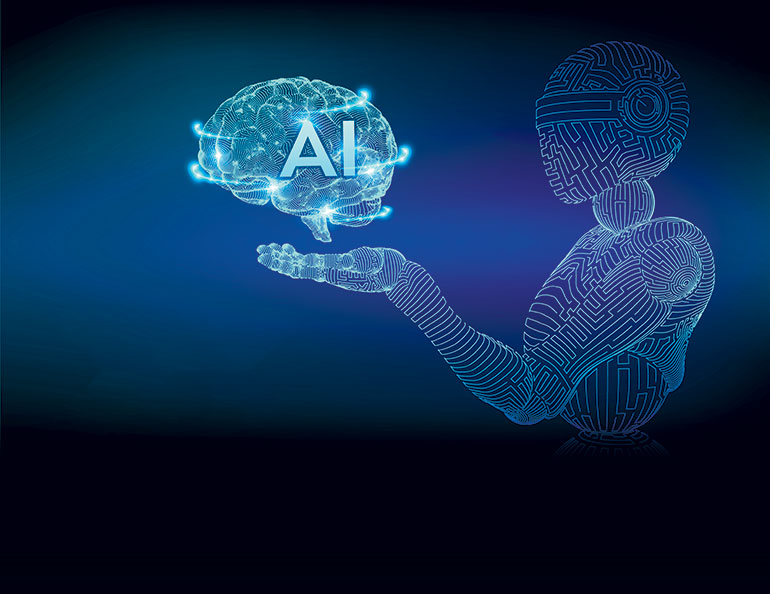Keeping pace with technological risks and cybersecurity

The rapid pace of technological changes happening in businesses, industries, and societies comes with new pressures and additional concerns. Given the massive and vast nature of the digital space, risks to businesses might be hiding in plain sight and so might be difficult to identify. When overlooked, these digital risks can cause significant damage and impact.
Recent reports from some think tanks have identified potential risks that might arise from the digital space. Within the complex technological landscape, understanding these potential headwinds can come handy for businesses who are navigating their place and relevance in a more digitally influenced world.
The AI mainstream
Artificial intelligence (AI) is becoming more of a reality last year as it generates new applications for enhancing security, improving banking and financing, business management, and much more. In the business setting, AI offers opportunities for organizations to take advantage of the technology’s ability to analyze data, make smart predictions, and mitigate potential risks.
“Enthusiasm around the technology’s potential to drive a new wave of growth has helped tech stocks to build again post-COVID, and analysts expect this upward trend to continue,” World Economic Forum (WEF) said in a report. “The proliferation of AI means there will be chances to take big swings; even if they don’t work out, the learning experiences for businesses will be incredible.”
While AI is on the side of mainstream with fewer drawbacks, that doesn’t mean no issues are lurking behind. According to WEF’s Global Risk Report, the adverse outcomes of AI technologies are projected to rise, with potential disruptions looming within the next decade. Key concerns include generative AI (GenAI) producing misleading or false content and its relationship to social polarization.
Likewise, the International Monetary Fund (IMF) shared that Asia-Pacific economies are among those affected by the continued AI evolution. In its Regional Economic Outlook, it revealed significant shifts will occur in the region, with AI influencing 50% of jobs in advanced economies and 25% in developing ones.
Because of this, AI is seen to increase inequality within countries in the Asia-Pacific region, particularly in the job market. The report notes of majority of the workers in services, sales, and clerical support are at risk of losing their jobs. In contrast, those in managerial, professional, and technical jobs are more likely to reap benefits brought by AI advancements.
Misinformation and disinformation
Another risk identified for this year is misinformation and disinformation, through which platforms for information might be geared to work against the truth.
The House of Commons Library defined misinformation as the “unintentional creation and spreading of such information,” while disinformation is the “deliberate creation and spreading of false and/or manipulated content.” Either way, both pose a risk for digital consumers, as misinformation and disinformation can accelerate given the fast spread of information through digital channels.
In the WEF’s Global Risk Report, misinformation and disinformation emerged as one of the biggest short-term risks for two consecutive years. Looking ahead to 2025, these challenges are more likely to significantly impact the academic sector, along with the private sector, government, civil society, and international organizations.
Partly fueling the rise of misinformation and disinformation is generative AI (GenAI) technology. While it simplifies content creation, it also produces significant inaccuracies, leading to false and misleading content. As a result, it resorts to a lot of AI-inaccuracies and human errors, making it increasingly difficult to access reliable information digitally.
“The advent of new technologies and the increase in user-generated content platforms is leading to a corresponding rise in the volume of content online. Flows of misinformation and disinformation from those creating it are becoming more challenging to detect and remove in an increasingly fragmented media landscape,” the report noted.
“The upshot is that it is becoming increasingly hard to know where to turn for true information. Both political and societal polarization skew narratives and distort facts, contributing to low and declining trust in media.”
Another contributing factor are algorithms and machine learning models, which can serve as a gateway for cyberattacks. These systems generate automated algorithms or exhibit algorithmic biases that negatively impact decision-making. It often lacks transparency, fairness, and accuracy, especially when critical decisions are made. In the worst-case scenario, algorithmic biases can deepen societal divisions divide and foster biases against political identities.
“Algorithmic bias can both be influenced by misinformation and disinformation and can be a cause of it. The risks of algorithmic bias are heightened when the data used for training an AI model is itself a biased sample.”

Censorship and surveillance
Censorship is when access to online content is limited or blocked. This can be advantageous to protect national security, adhere to policies, shield users from harmful and illegal content, or maintain social order. On the flip side, it can also lead to a lack of access to information, transparency, and concerns on free speech.
WEF’s report stated that misinformation and disinformation are inextricably linked with censorship, with the danger lying in potential responses to misinformation.
“The proliferation of misinformation and disinformation may be leveraged to strengthen digital authoritarianism and the use of technology to control citizens. Governments themselves will be increasingly in a position to determine what is true, potentially allowing political parties to monopolize the public discourse and suppress dissenting voices, including journalists and opponents,” the report said.
Regarding surveillance, emerging technologies are becoming central to the public sector. The 2025 Global Risk Report highlights that data analytics, AI, and other digital platforms are increasingly integral to government services and operations. These technologies provide greater access to data and information, while enabling monitoring of citizens’ activities. They are utilized for various purposes, including tax management, environmental protection, and voter registration, among others.
“Governments now have unprecedented access to data on citizens — and technology companies often have even better access than the governments themselves do. As the computing power available to governments and technology companies continues to rise, it becomes easier for both entities to monitor citizens’ activities,” the report said.
The report also emphasized significant variation in how governments manage the data they can access. Implementing regulations is crucial because it promotes better personal data protection and enforces stricter guidelines on how businesses and governments can utilize such information.
Explosive cybersecurity demand
Another notable risk for this year is cyber-attacks. With the increasing complexities of the cyberspace come the challenges of possible rippling effects that might be damaging to the economy and that live in it.
The WEF’s Global Cybersecurity Outlook 2025 highlighted factors responsible behind cybersecurity complexity: geopolitical tensions, cybercrime sophistication, supply chain interdependencies, regulatory requirements, emerging technologies, and cyber skills gap. All of these challenges are making it extremely difficult for leaders to manage cybersecurity while also preparing for future potential risks to come.
The report revealed that 72% of organizations have experienced an increase in cyber risks; while 47% expressed major concerns about security threats posed by GenAI, and only 4% believe they have the necessary skills and personnel to safeguard their systems.
According to the WEF Annual Meeting 2025 report, 42% of organizations fell victim to cybercrime attacks in 2024, including phishing, vishing, deep fake, and other social engineering attacks.
Cybercrimes are constantly surging and evolving, and they have become increasingly profitable as cybercriminals have learned to maximize their gains while minimizing risks. This shift has given a rise to a new trend known as cybercrime-as-a-service, according to the report.
“This is the trend that we’re seeing — professionalization of crime. They require good technology; they require good software engineers. So, the talent that they are accessing are basically the same talents that all of us are searching for, except that they pay better; and that’s where we face a significant challenge. How do we ensure that the talents go to the good guys and not to the dark side?” Department of Information and Communications Technology (DICT) Secretary John Ivan Uy said.
To turn cyberspaces into a safer space, collaborative effort is necessary to stop cybercriminals in their tracks.
“Cybercriminals collaborate; and so must those who seek to stop them, including governments, the private sector, e-wallet providers, digital banking, and citizens,” Mr. Uy said.
It is also important to equip industry leaders with knowledge, helping them make informed and strategic decisions regarding cybersecurity risks their organization faces.
“Leaders must view cybersecurity as a strategic investment, ensuring resilience against new threats and recognizing it as a collective responsibility across all organizations. Strong leadership is essential, focusing not just on technical aspects but also on the economic implications of cyber risks. A unified approach between business and cyber leaders is critical to managing the growing complexity of cybersecurity,” the WEF Annual Meeting report read. — Angela Kiara S. Brillantes



